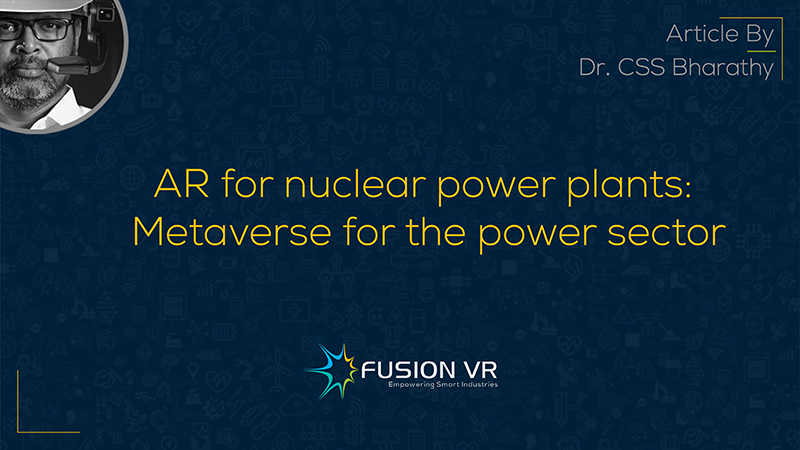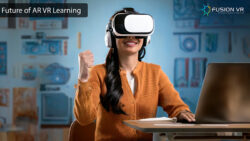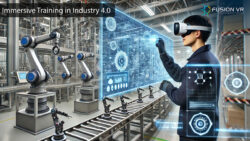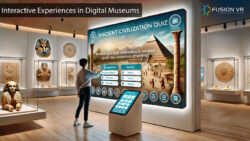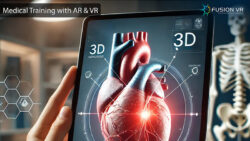As everybody knows, Augmented Reality is a part of extended reality where the user can view the superimposed virtual environment in the real world and experience immersion.
Let’s shed some light on the fact about the fourth industrial revolution. To increase safety and productivity and improve the overall quality standard of the automation processes, the industrial sector decided to adapt to the rapid growth of technology alongside the manual process. Long story short, the Fourth Industrial Revolution is when manual work meets digitalisation. Industry 4.0 collectively includes technologies such as industrial IoT, big data & analytics, artificial intelligence (AI), autonomous robots, cybersecurity technology, immersive technologies (AR/VR/MR) etc.
Speaking of immersive technologies, they are one of the active participants among all the technologies involved in the Fourth Industrial Revolution. Now, let’s look at augmented reality and its application in nuclear power plants. Augmented Reality in nuclear power industry can be of great use in many ways, of which a few are discussed below.
Nuclear Power plants have complex maintenance procedures and requirements. Augmented Reality for nuclear power plants can aid in reducing human errors while performing those procedures, improving communication between the team, improving operational abilities, and training using 3D models.
Let’s discuss a few of the significant use cases for augmented reality applications in nuclear power plants. For this discussion, let us consider the data provided by “Deloitte”. The very first use case discussed here is the implementation of AR technology into the complex maintenance procedure that are still followed by paper-based procedures.
Fusion VR: One-Stop Solution for AR/VR/MR Deployment
Augmented Reality in nuclear power plants can be used to convert existing paper-based procedures into computer-based procedures to minimise overdoing by helping the workers to do only the necessary steps for the required action. It would also make communication much more manageable.
The other use case that is discussed widely is the usage of augmented reality in nuclear power plants to superimpose information regarding the plant.
Speaking of nuclear power plants, one of the significant noteworthy concerns would be the presence of radiation inside the plant. The radiation level and intensity could be displayed over AR, eliminating the traditional procedure of analysing it using survey maps. To display an actual exposure rate, AR could use the telemetry data to calculate the distance from the source radiation and decide a real time exposure data based on the source and the distance.
A nuclear power plant typically has groups of engineers, technicians and workers engaged in activities at random locations across the plant. They need proper guidance and communication, especially during the time of maintenance, outages and troubleshooting.
The workers and the engineers within the plant can easily communicate and get accurate instructions with an AR device alongside the typical process of maintenance and troubleshooting from experts located anywhere in the world. This enables quicker troubleshooting and restoring the plant back to regular operation. Saving time and effort here saves costs and improves revenue.
AR technology is revolutionising every sector, and implementing it in nuclear power plants to increase productivity and training will surely make a change for the better. Augmented Reality, when used at its maximum potential, can levitate the working environment into a safer space. Being one of the pioneers in the field of immersive technologies, Fusion VR could be a one-stop solution for all the AR VR and MR deployment options, like implementing Augmented Reality in nuclear power industry in India.

